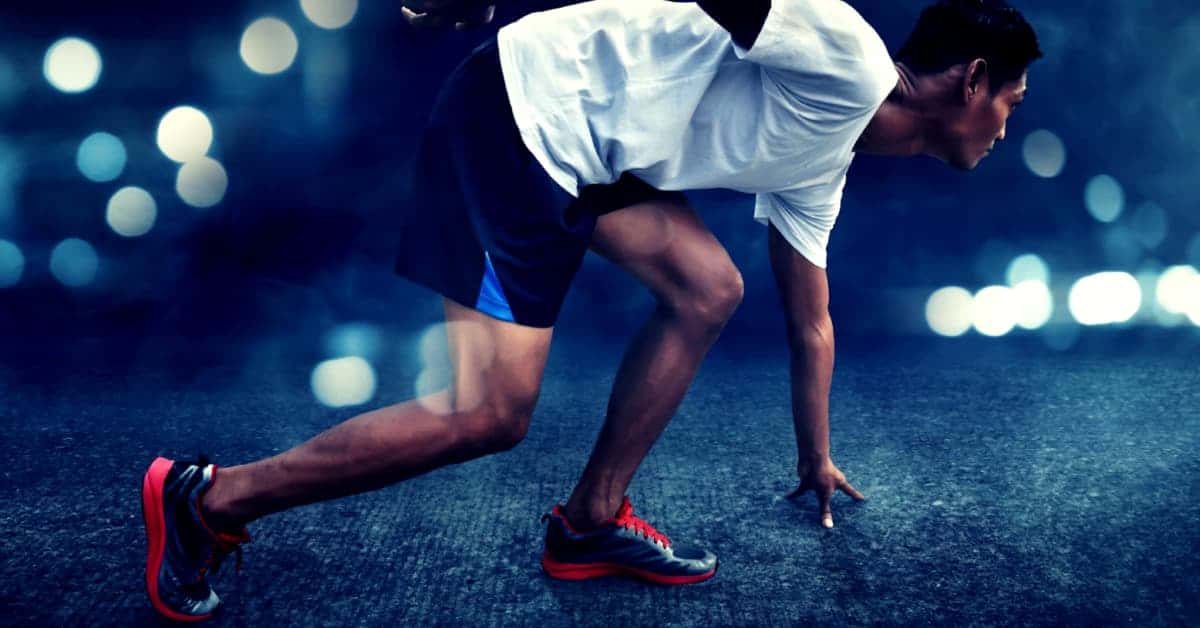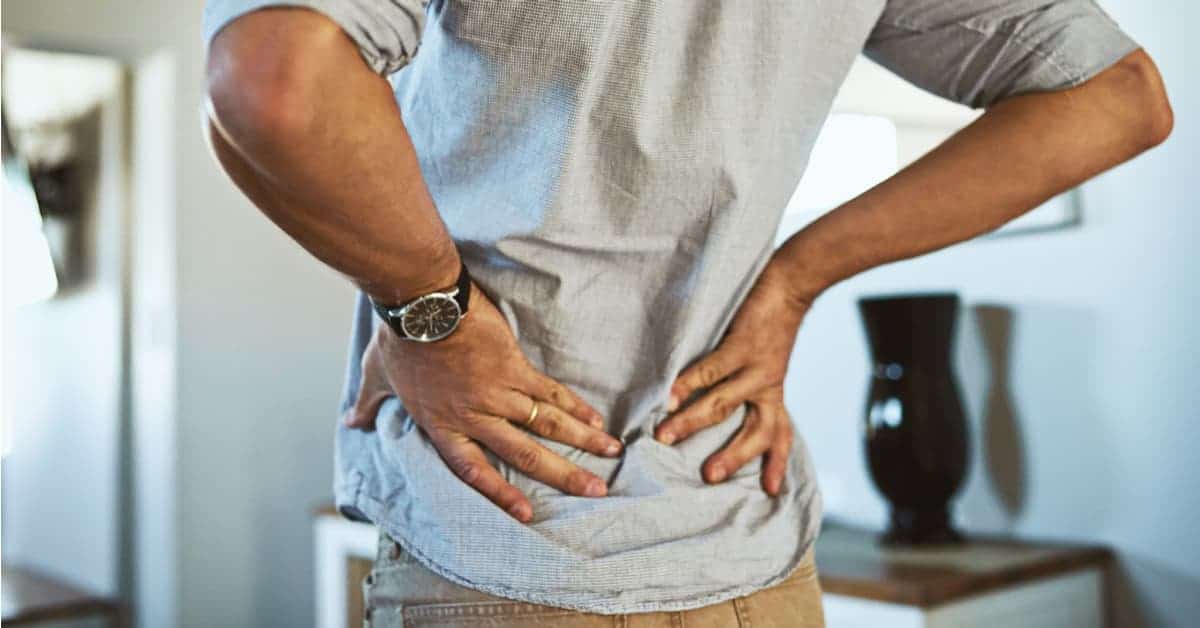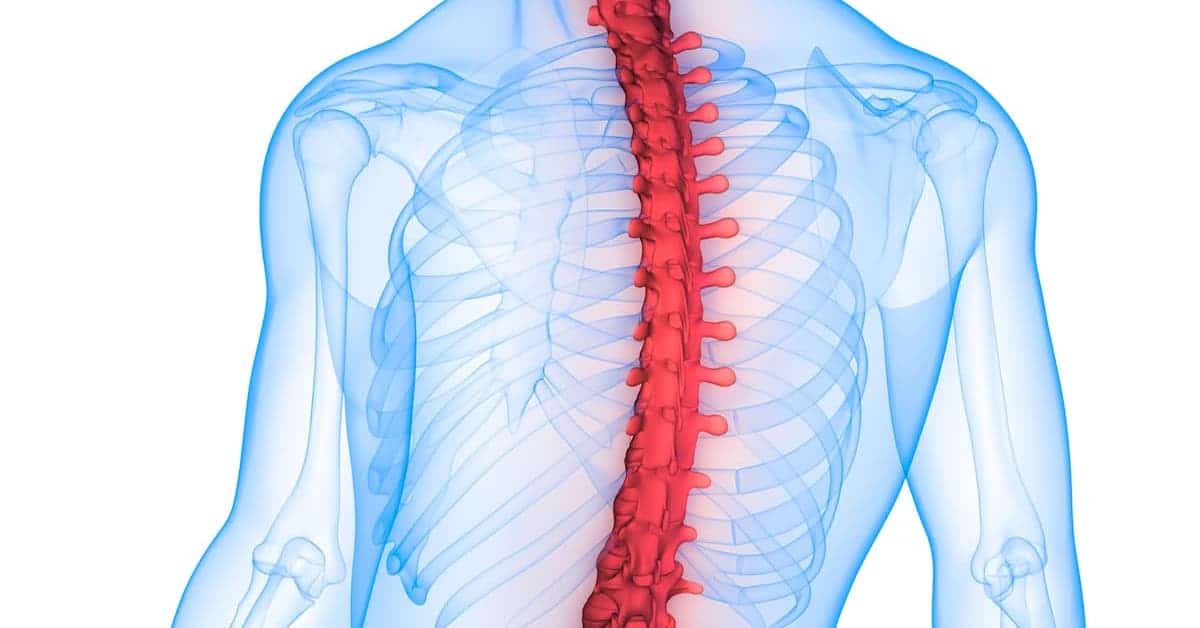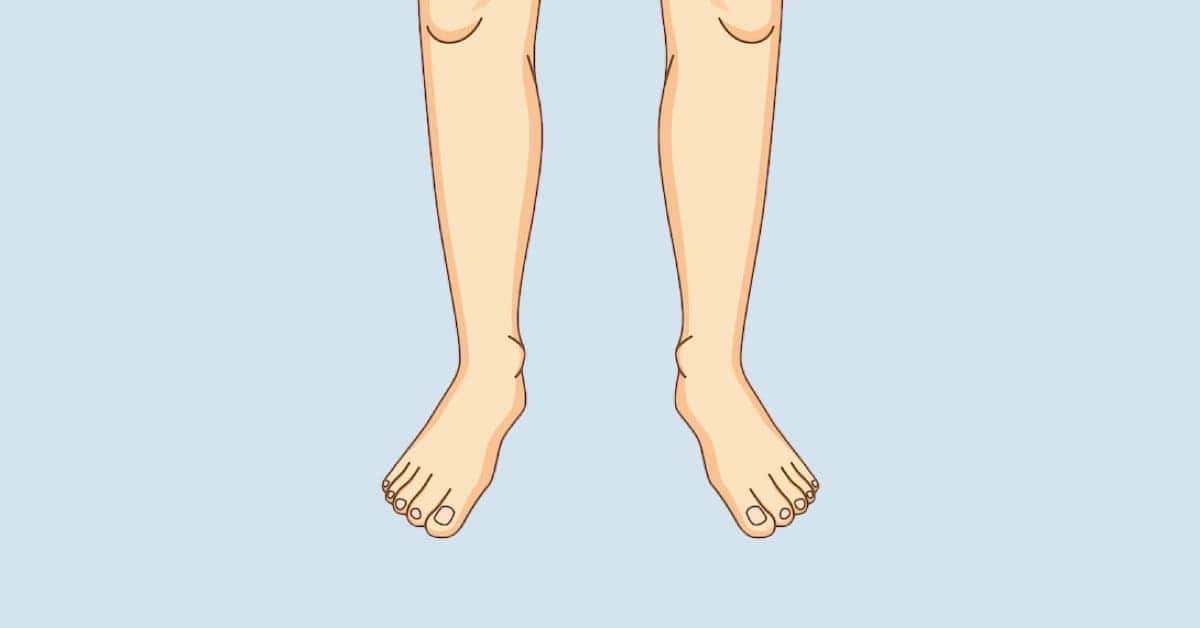If you’ve been struggling with lower back discomfort or have noticed an excessive arch in your lower back, you might be dealing with a postural issue called hyperlordosis.
To help you address this problem, we have a step-by-step guide with massage, stretching, and strengthening exercises that you can do right at home.
I. Understanding Hyperlordosis
Hyperlordosis is a condition where the natural curve in your lower back (lumbar region) is more pronounced than it should be. While some curvature in the spine is normal and necessary for healthy movement, an excessive curve can result in discomfort, pain, and reduced mobility.
Several factors can contribute to hyperlordosis:
- Sedentary lifestyle: Sitting for long hours daily, especially with poor posture, can lead to muscle imbalances and tightness, contributing to hyperlordosis. In particular, sitting causes the hip flexors to tighten, further exacerbating the issue.
- Poor posture: Adopting poor posture in other areas of the spine, such as leaning forward with a rounded upper back and forward head posture, can cause the lower back to compensate and adapt by arching more. This compensation can lead to hyperlordosis.
- Muscle imbalances: Weak core, gluteal muscles, and hamstrings, combined with tight hip flexors, lower back muscles, and lats, can cause the lower back to arch excessively.
You may have hyperlordosis if you’re experiencing lower back pain, stiffness, or an excessive arch in your lower back. You can work towards correcting this postural issue by following a targeted approach to massage, stretching, and strengthening exercises.
II. The Plan to Fix Hyperlordosis
Before diving into the specific exercises and techniques, let’s briefly review the goals for fixing hyperlordosis. Our primary aim is to create balance in the muscles surrounding your spine, which will help to support a more neutral, healthy posture. To do this, we’ll focus on three main areas:
- Massaging tight muscles: We’ll target the hip flexors, lower back muscles, and lats to release tension and improve flexibility.
- Stretching overactive muscles: To promote balance, we’ll stretch the hip flexors, lower back, and lats, which are often tight in individuals with hyperlordosis.
- Strengthening weak muscles: Lastly, we’ll work on building strength in the core, gluteal muscles, and hamstrings, which are essential for maintaining proper spinal alignment and preventing hyperlordosis.
By addressing these three key areas, you’ll improve your posture and reduce the discomfort associated with hyperlordosis.
III. Massage Techniques for Hyperlordosis
This section will focus on self-massage techniques to help release tight muscles and remove chronic tightness in the muscles.
Foam rolling the lower back
- Lie on the floor with a foam roller placed horizontally under your lower back. It’s important to keep your lower back rigid to avoid arching over the foam roller.
- Place your hands behind your head for support, and keep your feet flat on the ground with your knees bent.
- Slowly roll up and down the length of your lower back, applying gentle pressure to the muscles.
- Pause and hold for a few seconds on any tight or tender spots.
- Continue for 1-2 minutes.
Massage ball for the lower back
- Position a massage ball, such as a tennis or lacrosse ball, horizontally under your lower back.
- Lie down on the floor with the ball between your spine and the side of your lower back muscles.
- Use your hands and feet to gently roll the ball along the muscles on either side of your spine.
- Hold for a few seconds on tight or tender spots.
- Continue for 1-2 minutes on each side.
Foam rolling the hip flexors
- Lie face down with a foam roller placed horizontally under one of your hips.
- Position the roller to target the rectus femoris and tensor fasciae latae (TFL) muscles.
- Gently roll back and forth over the front and side of your hip.
- Pause and hold for a few seconds on tight or tender spots.
- Continue for 1-2 minutes on each hip.
Massage ball for the hip flexors
- Lie face down with a massage ball positioned just below your hip bone, targeting the rectus femoris and TFL muscles.
- Apply gentle pressure by resting your body weight on the ball.
- Use your hands and feet to maneuver your body as needed.
- Slowly roll the ball around the front and side of your hip, focusing on tight or tender spots.
- Hold the pressure for a few seconds on these areas before moving on.
- Continue for 1-2 minutes on each hip flexor.
Foam rolling the lats
- Lie on your side with a foam roller placed under your armpit.
- Extend your bottom arm above your head and keep your top hand on the ground for support.
- Gently roll the foam roller up and down along the side of your torso, targeting your lat muscles.
- Pause and hold for a few seconds on tight or tender spots.
- Continue for 1-2 minutes on each side.
Be sure to perform these massages regularly, along with the stretching and strengthening exercises in the following sections, to improve your posture.
IV. Stretching Exercises for Hyperlordosis
In this section, we’ll focus on stretching exercises that can help improve flexibility and balance in the muscles affected by hyperlordosis.
Hip flexor stretch
- Kneel on one knee with your other foot flat on the floor in front of you
- Keep your front knee bent at a 90-degree angle
- Engage your core and glutes while slightly tucking your pelvis under
- Gently shift your weight forward, feeling a stretch in the front of your hip and thigh on the kneeling leg
- Hold for 30 seconds and then switch sides
Child’s pose stretch
- Start on your hands and knees, with your knees slightly wider than hip-width apart
- Bring your big toes together and sit back on your heels
- Extend your arms forward and lower your chest towards the ground, resting your forehead on the floor
- Breathe deeply and hold the stretch for at least 30 seconds
Knee to chest stretch
- Lie on your back with both knees bent and feet flat on the floor
- Bring one knee to your chest, gently hugging it with your hands
- Keep your lower back pressed against the floor and your head relaxed
- Hold for 30 seconds and then switch sides
Lat stretch
- Stand with your feet shoulder-width apart
- Reach your arms overhead and interlace your fingers
- Gently lean to one side, feeling a stretch along the side of your torso
- Hold for 30 seconds and then switch sides
V. Strengthening Exercises for Hyperlordosis
In this section, we’ll cover strengthening exercises that target the core, glutes, and hamstrings, which can help improve posture and reduce hyperlordosis.
Pelvic tilts
- Lie on your back with your knees bent and feet flat on the floor, hip-width apart
- Place your arms by your sides, palms facing down
- Gently flatten your lower back into the floor by tilting your pelvis upward, engaging your core muscles
- Hold for a few seconds, then return to the starting position
- Perform 10-15 repetitions
Plank
- Begin in a push-up position with your forearms on the ground, elbows under your shoulders, and your feet hip-width apart
- Engage your core, glutes, and thighs, keeping your body in a straight line from head to heels
- Hold this position for 30 seconds or more, depending on your strength
Dead bugs
- Lie on your back with your arms extended towards the ceiling and your knees bent at a 90-degree angle
- Engage your core to press your lower back into the floor
- Slowly lower your right arm and left leg toward the floor, keeping your lower back in contact with the ground
- Return to the starting position and repeat with your left arm and right leg
- Perform 10-15 repetitions on each side
Donkey kicks
- Begin on your hands and knees, with your hands under your shoulders and knees under your hips
- Engage your core and keep your spine neutral
- Lift your right leg, keeping your knee bent, and press your heel toward the ceiling
- Lower your leg back down to the starting position
- Perform 10-15 repetitions on each leg
Deadlifts
- Stand with your feet hip-width apart, holding a dumbbell in each hand with your palms facing your thighs
- Keep a slight bend in your knees and engage your core
- Hinge at your hips, lowering the dumbbells towards the ground, while keeping your back straight
- When you feel a stretch in your hamstrings, reverse the movement, pressing your hips forward and returning to a standing position
- Perform 10-15 repetitions
Glute bridge
- Lie on your back with your knees bent and feet flat on the floor, hip-width apart
- Place your arms by your sides, palms facing down
- Engage your core and glutes as you lift your hips towards the ceiling, creating a straight line from your knees to your shoulders
- Hold for a few seconds at the top, then slowly lower your hips back down
- Perform 10-15 repetitions
Hamstring Curl with a Stability Ball
- Lie on your back with your legs straight and place your heels on top of a stability ball.
- Position your arms by your sides, palms down, for support.
- Engage your core and lift your hips off the ground, creating a straight line from your shoulders to your heels.
- Slowly bend your knees and roll the ball toward your glutes, keeping your hips elevated.
- Pause briefly, then straighten your legs and roll the ball back to the starting position.
- Perform three sets of 10-15 repetitions.
By incorporating these stretching and strengthening exercises into your routine, along with the massage techniques from Section III, you can work towards correcting hyperlordosis and improving your overall posture. Remember to be consistent and patient with your progress, and consult a healthcare professional if you have any concerns or questions.
VII. Targeted Tips for Fixing Hyperlordosis
In addition to the exercises and stretches, consider incorporating these lifestyle changes to address hyperlordosis more effectively:
- Be mindful of your sitting habits: Prolonged sitting can cause hip flexors to tighten, contributing to hyperlordosis. Take breaks to stand, walk, or stretch throughout the day.
- Stretch at your desk: Perform seated hip flexor stretches or other desk-friendly stretches to help alleviate muscle tightness and maintain good posture during your workday.
- Adjust your workstation: Ensure your desk and chair are ergonomically set up to promote proper posture. Use a lumbar roll or cushion to support your lower back while sitting.
- Focus on good posture: Be conscious of maintaining good posture throughout the day, especially when standing and walking. Engage your core, keep your shoulders back, and avoid slouching.
- Wear supportive footwear: Opt for shoes with good arch support and avoid high heels, as they can exacerbate hyperlordosis by tilting the pelvis forward.
Wrapping It Up
By following the massage techniques, stretching and strengthening exercises, and targeted lifestyle tips provided in this article, you can improve your posture and reduce hyperlordosis. Remember that consistency and patience are essential for progress, and don’t hesitate to consult a healthcare professional if you have any concerns or questions.
Stay dedicated to your routine, as it may take time to see improvements. As your posture improves, you can experience benefits such as reduced back pain, enhanced mobility, and better overall body alignment.


























